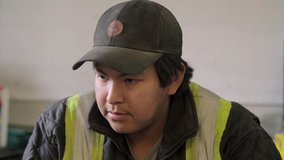For Angela
This short film portrays the experiences of Rhonda Gordon and her daughter, Angela, when a simple bus ride changes their lives in an unforeseeable way. When they are harassed by three boys, Rhonda finds the courage to take a unique and powerful stance against ignorance and prejudice. What ensues is a dramatic story of racism and empowerment.

Details
-
directorNancy Trites BotkinDaniel Prouty
-
producerNancy Trites BotkinJoe MacDonald
-
executive producerChes Yetman
-
writerDaniel Prouty
-
photographyCharles Lavack
-
soundDavid Husby
-
editingKelly Saxberg
-
sound editingCarol Wenaus
-
re-recordingJohn Schritt
-
musicNorman Dugas
-
castTina KeeperTiffany PetersDrew VodreyLee J. CampbellJames MillerTony L. ClarkBlake Taylor
Education
Ideal for essays and debates on Indigenous history and bullying. What would you have done if you were riding the bus with Angela and her mother? Use this video to begin a lesson on the history of colonization in Canada and its ongoing effects. Identify ways in which discrimination has been perpetuated in Canada and assess strategies for dealing with it. Write a personal essay about an example of discrimination that you’ve witnessed.

















